On Monday, apple held its annual Developer Conference WWDC, which released a series of important product upgrades, as well as new products, functions and technologies. Previously, we have published an article to introduce the main contents of WWDC. Today, we are writing an article to discuss the apple car system Carplay.
Think car companies and regulators are really willing?
By Du Chen
On this week's WWDC, apple previewed a new version of Carplay system under development, which will be open to car companies as soon as the second half of next year. The most powerful thing about this new version of Carplay is that in addition to the screen of the central control entertainment system, it can also take over the car's dashboard and more screens in the car.
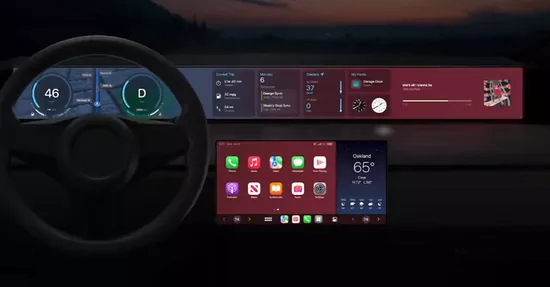
Carplay new version effect picture source: Apple
As a result, Carplay will be responsible for the entire ride experience of the owner and passengers. For example, the radio and air conditioner can be adjusted directly on the user interface of Carplay, and can even be voice controlled through Siri.
Especially when taking over the dashboard, car owners may forget whether they are driving Ford or Mercedes Benz, Honda or Volvo - they will feel that they are driving an apple car.
According to the extremely limited description provided by apple on WWDC, the new Carplay can display important information on the instrument panel, including but not limited to speed per hour, engine speed, gear, water temperature, fuel consumption, remaining fuel volume / mileage, etc.
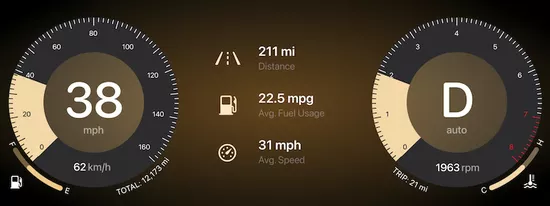
Dashboard display effect of new Carplay source: Apple
Apple's slide also shows that a number of well-known automobile brands, including Ford, Porsche, Mercedes, Audi, Honda, Lincoln, Volvo, Renault, Nissan and Infiniti, seem to support the "forward-looking concept" of the new Carplay.
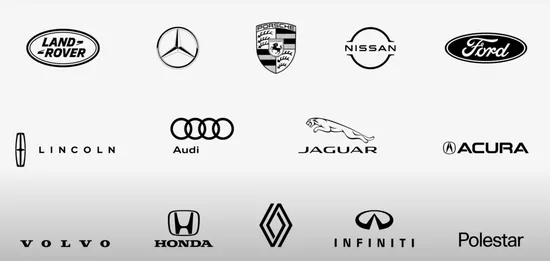
Car brands supporting the new Carplay source: Apple
This news immediately excited many Apple fans and technology media: because the long-awaited Apple car is finally coming - although it is not really in the form of an apple brand car.
But is this really what Apple says? Can Carplay really take over the dashboard? Does this mean that car companies really don't need to develop any software related functions, and just leave it to apple?
There are still many situations and problems worth discussing about the new version of Carplay, which looks very cool but lacks reliable information.
Carplay and iphone Whether the requirements of real-time operating system and vehicle specification level are met
Friends in the automotive industry should know that many electronic control systems running on the car, such as the engine, gearbox, brake, and some relatively new auxiliary driving functions, such as automatic emergency braking, adaptive cruise, etc. - because they are very important for the driving safety of the car, these systems must adopt the real-time operating system (RTOS).
According to the column "automobile controller" of Zhihu, the real-time system requires that when the external world or data is generated, the operating system must be able to accept and process it at a fast enough speed, and the processing results must also produce a rapid response on the corresponding system within the specified time.
For example, the controller behind the airbag operates a real-time system, which must be able to open the airbag with minimal time error when the impact occurs.
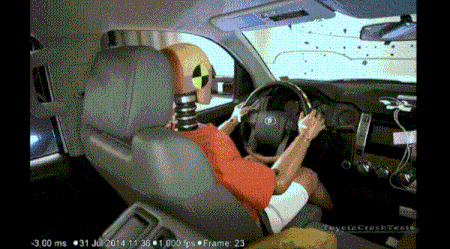
Vehicle crash airbag ejection test image source: Toyota
Apple's IOS and Carplay, which exists as a system plug-in, are not real-time systems. There are fundamental differences between the two in the underlying computing mode.
The opposite of real-time system is time-sharing operating system (TSOs). Computer and smartphone systems, including MacOS, windows , IOS and Android are actually time-sharing systems.
This system has no fundamental requirements for the timeliness of processing and feedback, because its optimization direction is to handle multiple tasks at the same time, such as navigation, music player, etc. Therefore, TSOs is adopted for the on-board entertainment system and temperature control system (air conditioning) of general cars.
However, if the airbag controller is replaced by TSOs, the system is handling other tasks at the same time. If the system gets stuck a little, or even has an error fault, the airbag may not be opened in time, resulting in serious casualties.
After understanding the underlying differences between automotive electronic control systems and ios/carplay, let's move on to more details of Apple's new version of Carplay.
An apple speaker said, "the iPhone can communicate with the vehicle's real-time system 'on device' and 'privacy friendly'.
Friends who have used Carplay should know that the current version of Carplay runs on the user's iPhone, not on the car's entertainment system. What Apple said on WWDC is equivalent to helping us confirm the fact that the new version of Carplay, which can take over the user's dashboard and display important data such as speed per hour and rotational speed, is still running on the user's mobile phone.
The instrument panel itself is indeed not a key system. Generally, it does not need to run a real-time system on the vehicle. However:
1) The instrument panel is closely related to the core operation system of the vehicle. Drivers need to know the speed, speed and other key information in real time, understand their own vehicle conditions, and ensure the safe operation of the vehicle, as well as the safety of surrounding vehicles, bicycles and pedestrians.
If the mobile phone system fails, Carplay has a problem, or the connection is interrupted due to the failure of the data cable / Bluetooth wireless, Carplay will also stop working - at that time, whether the user's dashboard can immediately switch back to the local system is also a key point.
Once the instrument panel fails, the car owner will not be able to understand the key driving information, resulting in potential safety hazards - when the failure occurs, you can't expect ordinary car owners to "gross estimate" the speed and speed through visual observation, physical feeling of acceleration and listening to the sound of the engine?
And there is another point worth mentioning about the Carplay connection method: the general vehicle specification USB connector has extremely strict requirements for the operating temperature range, for example, it needs to work normally at minus 40 ℃ to 85 ℃ above zero, or even 105 ℃. However, the lightning data cable required for Carplay connection and the Bluetooth module in the mobile phone have not yet reached the vehicle specification level requirements.
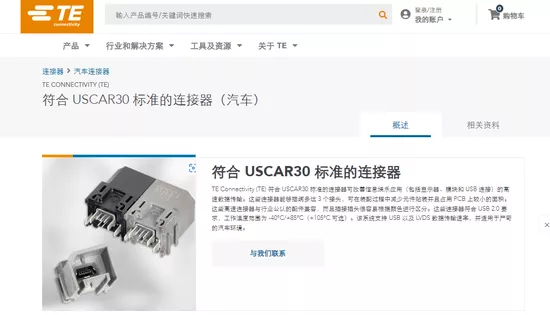
USB connector compliant with a uscar30 source: te connectivity
2) Auto blogger Yu xinlie put forward a very important situation [1]: the on-board auxiliary driving functions including automatic emergency braking system (AEB) and adaptive cruise control (ACC) are all on-board systems with high safety and real-time performance for system operation. Vehicles with AEB and ACC systems must display warning lights and warning messages in case of system failure.
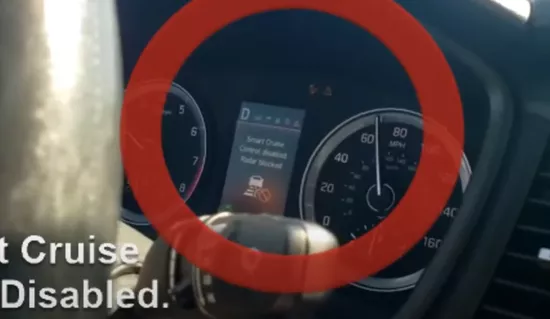
2018 Hyundai Sonata ACC system fault warning information picture source: medelste
At least in the United States and Europe, road traffic safety regulators require that key components behind the dashboard must run real-time systems. In apple, how important information of the dashboard is reflected on the UI of Carplay, and how non real-time systems and real-time systems work together on the dashboard - not only at the system architecture level, but also at the regulatory compliance level, are difficult problems.
Yu xinlie wrote:
”Without any function related to driving safety, Carplay cannot take over the instrument screen. Will automakers open these important data to apple? How to open it to apple while ensuring driving safety?
On WWDC, apple said that it can access the real-time system of the car to obtain data. How to stably and effectively transmit the data to Carplay is related to driving safety. In the past, Carplay was only responsible for navigation and audio entertainment, which could be erratic and unstable, but the instrument screen when driving could not. But this time Apple didn't explain anything. “
Behind Apple's attack on the dashboard
There are two background stories worth telling about the new Carplay attack dashboard.
The first background story, many people should have heard of: Apple's car building plan project Titan.
This plan can be traced back to 2014. However, compared with most of Apple's long-term product development plans, project Titan is an anomaly: it has been (allegedly) recruiting people, but there has been no progress that can be disclosed to the public, and even the reliable clay model has not been disclosed - this is not because Apple has done a good job in confidentiality. In fact, the level of Apple's security team has plummeted in recent years, Basically, no secret can be kept. The reliable appearance of the new mobile phone could flow out almost half a year ago.
The real reason why Titan hasn't heard from us may be that the project can't be pushed forward. According to rumors in Silicon Valley, Titan's car building plan as a whole is basically close to stopping.
However, it is entirely possible that some detailed projects within Titan are still in progress, but not under the name of Titan. For example, the dashboard + temperature control + entertainment system we saw in the Carplay part of WWDC this time - these functions have nothing to do with Carplay in the past, and will only be developed as an automotive system.
At the same time, Carplay has entered more than 600 models under major car companies. Car companies used to rack their brains to develop software interactive experience, but they always missed the point. Now one of the world's top mobile phone sales brands has come to provide software for free (Carplay is not an authorized business, and Apple claims that it does not charge car companies). Car companies simply can't be more happy.
Against the background that Titan can not continue to advance and Carplay has achieved great market success, it is understandable and very likely that Carplay will cannibalize Titan's R & D progress.
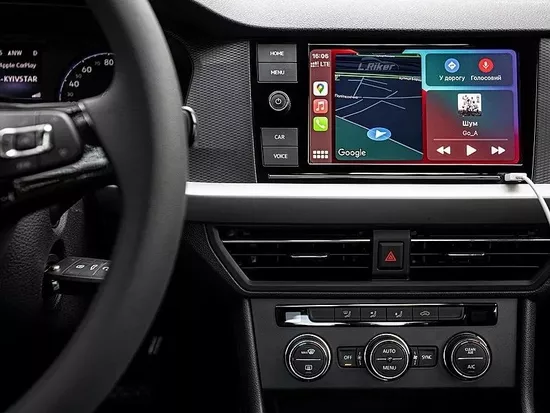
Source: Volkswagen
In addition, it is said that real-time systems are also being developed in Titan project, but no one outside knows how the progress is. This rumor is based on Dan Dodge, the co-founder of QNX (now acquired by BlackBerry), the largest vehicle real-time system supplier.
Just now we mentioned that Titan has always claimed to be recruiting people. In fact, Dodge was once rumored to be recruited by apple. However, his LinkedIn profile hasn't stopped since he left QNX. There are also many experts in the field of automotive systems who are similar to the old brother. They are rumoured to have joined apple, but there has been no exact information; On the contrary, senior executives with automotive related experience have been quitting Titan project.
The second background story is the little-known multi screen adaptation capability of Carplay.
Back in 2019, apple achieved a major but little-known technology upgrade on the Carplay project: Carplay's multi video streaming capability.
Carplay can appear on multiple screens at the same time - yes, the [macbook] with the latest M2 chip will be released in 2022( https://apple.pvxt.net/c/1251234/435400/7639?u=https%3A%2F%2Fwww.apple.com%2Fcn%2Fmac%2F ) The air can only be connected to one screen, while the iPhone in 2019 can support multiple screens through Carplay.
In addition, Carplay in the 19th year has also technically supported the instrument panel and HUD (that is, the head up display projected onto the windshield), but it can not completely take over the entire instrument panel like this year's WWDC.
If you first heard that Carplay had multi screen support, you are not alone. Maybe a lot of car companies don't know - otherwise, they should have launched adaptive models long ago, right?
Maybe Apple also realized that it was useless to negotiate with car companies through pure industry communication. So on this year's WWDC, apple simply made a new version of Carplay product with the same multi screen capability as at that time, and displayed it in front of millions of viewers.
The intention of this is well understood: with the help of the needs of hundreds of millions of iPhone users around the world, we will force car companies to cooperate.
In fact, Apple's show on WWDC is really for consumers and iPhone users. Maybe that's why it didn't mention the key details about the vehicle specification level during the speech.
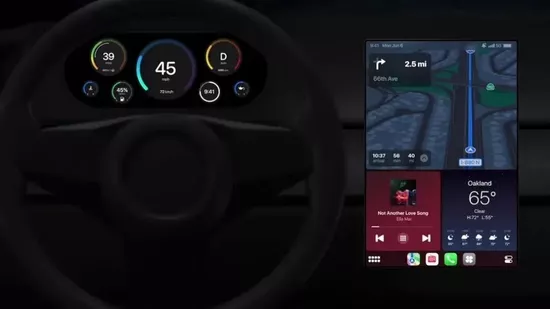
The new Carplay takes over the effect of the dashboard and the central control entertainment system screen at the same time. Source: Apple
What's more funny is that the verge, the technology media, contacted a circle of car companies that have supported Carplay function after the meeting, including the logo shown in the WWDC slide. As a result, some auto companies said that they had no plans for multi screen support at present, while others said that they were noncommittal about their future plans - no different from 2019.
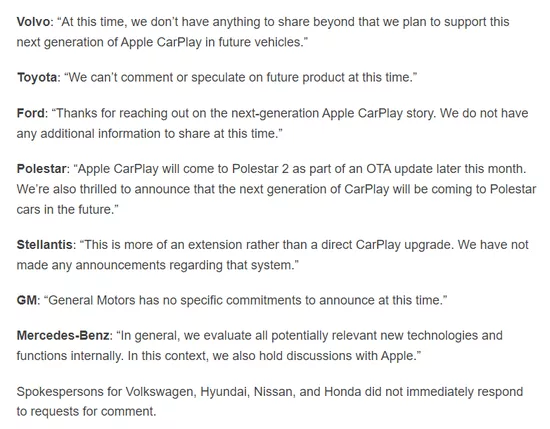
Source: the verge
Why don't car companies cooperate? We can only reasonably speculate here:
Apple said on WWDC that Carplay "can always accurately adapt to different shapes of screens ", however, in practice, according to some insiders in the automotive industry, Carplay adapts to different shapes of screens, and the debugging burden on car companies is not small. Under such a premise, do you think car companies will be willing to add a few more screens that support Carplay? It is simply adding difficulties. If the use effect is poor, it will not be apple that will be criticized and asked to repair by users, but car companies.
Go back to the instrument cluster and vehicle key data. As mentioned earlier in the article, the requirements for real-time systems are very strict, and they are under the direct jurisdiction of traffic safety regulators in Europe and the United States. To go a step further, even if the Carplay version that can take over the dashboard is really launched, it must be very difficult to embed it in the car companies. In addition, whenever Carplay has a problem, which leads to an accident, the first target of public condemnation and the primary person responsible for civil compensation must be the car companies, not apple.
We do not support the establishment of industry barriers to curb cross industry innovation. But at least in the automobile, which is a technology carrier directly related to the safety of human life, there is no room for carelessness.
Various complex technical and industrial factors have cast layers of shadow on this version of Carplay in Apple's plan.